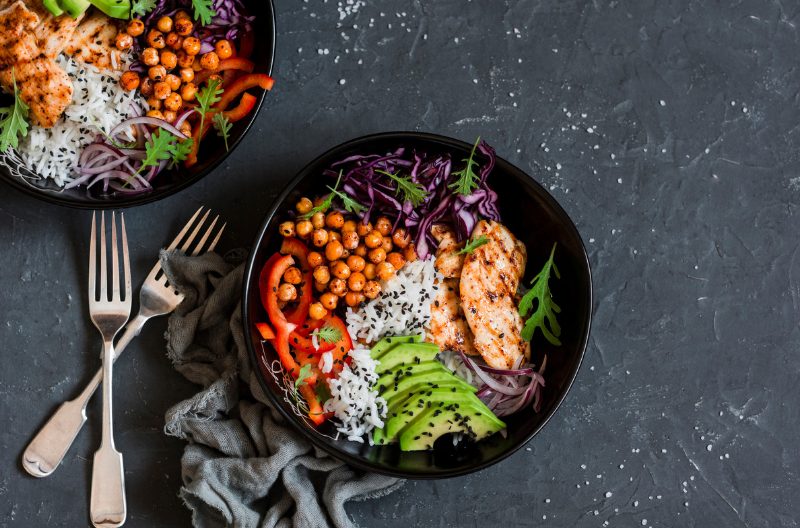Eating well and living your best life are two things that go hand in hand. However, revamping your dietary habits is often easier said than done. Rather than dramatically changing the food that you eat, the Flexitarian diet could help you make healthier choices while still enjoying some of your favorite and most wholesome meals.
Voted the third best diet of 2018 by U.S. News, the flexitarian diet is most definitely gaining steam.[1] If you’ve not yet heard about this particular type of eating regime, listen up. Providing you with all the benefits of vegetarianism but allowing you to eat some meat now and then, this could be one of the most attractive diets ever.
What is a Flexitarian?
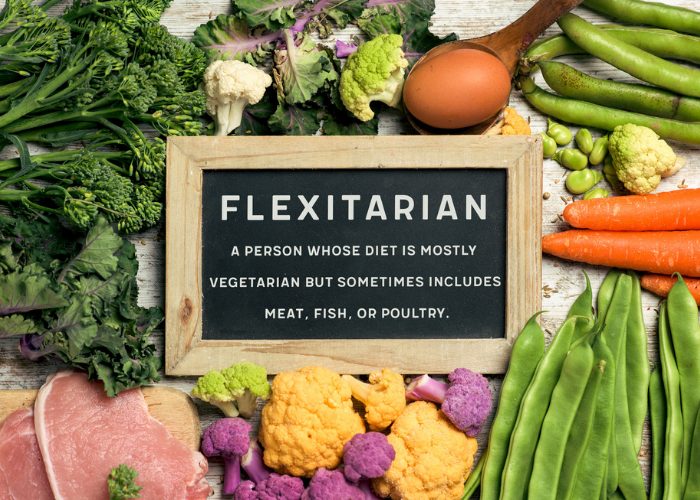
First up, let’s deal with the most important question: What is a flexitarian? Well, the word is actually a combination of two words. Flexible and vegetarian. With that in mind, it should come as no surprise that the flexitarian diet is one that allows you to be vegetarian some of the time, while also allowing you to give in and eat meat when you feel the urge.
You might say that it’s about having your cake and eating it too (or rather, having a veggie burger and eating a little meatloaf on the side too!). Either way, there are many benefits to becoming a flexitarian, not least the fact that it means you’ll be cutting down on your meat consumption. What’s more, the diet trend appears to be taking off.
This diet is also referred to as a semi-vegetarian diet, so don’t be confused if you see this term floating around during your research!
Flexitarianism is a growing trend
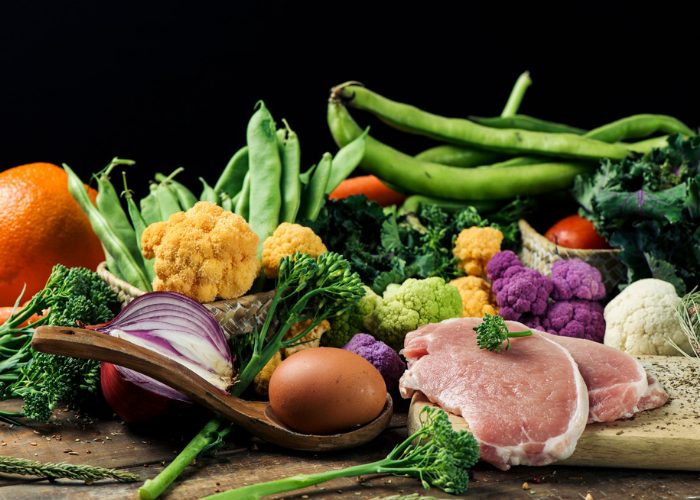
The rising popularity of plant-based foods and growing number of Americans identifying as vegan or vegetarian suggest that many are adopting this lifestyle.[2] The logical conclusion to draw here is that as people learn more about the advantages of plant-based products, they are more inclined to start including them in their diet.
However, that doesn’t mean that everyone is cutting out meat entirely. Opting to follow the flexitarian diet allows people to be healthier without having to completely overhaul their eating regime or lifestyle.
But it’s been around for around a decade
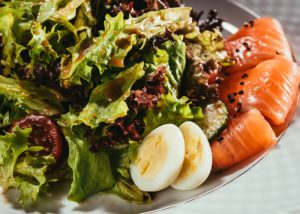
While the term may sound as undeniably modern, it’s actually more than a decade old. One of the first known uses of the word flexitarian dates back to 2008 with the publication of the book, “The Flexitarian Diet: The Mostly Vegetarian Way to Lose Weight, Be Healthier, Prevent Disease, and Add Years to Your Life”, by Dawn Jackson Blatner.[3] The guide discussed how people could slowly transition to eating more plant-based whole foods by using the flexitarian diet as something of a stepping stone. However, her exact guidelines on how to follow this plan are no longer recommended.
The term was listed in the Oxford English Dictionary six years later in 2014 and has been used frequently in common language ever since.[4] The dictionary defines the noun as ‘a person who has a primarily vegetarian diet but occasionally eats meat or fish.’[5] It also notes that the word can be used as a modifier in the phrase ‘a flexitarian diet’ too.
It could help to prevent climate change
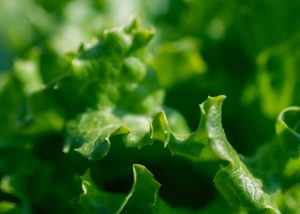
Unless you’ve been living under a rock for the past decade, you will be all too familiar with the looming threat that is climate change. Preventing this catastrophic problem lands on all of our shoulders and a real shift is needed when it comes to our lifestyles.
Researchers from Oxford University and the Swiss agricultural research institute, Agroscop looked into the environmental impact of 40,000 farms, and 1,600 processors, packaging types, and retailers.[6] Among other findings, it was found that the meat-heavy food supply chain we use today creates around 13.7 billion metric tons of carbon dioxide equivalents.
The researchers suggested that, “dietary change can deliver environmental benefits on a scale not achievable by producers.” In other words, changing your diet and adopting a less meat-heavy eating program could help to lessen the damage overall.
What Should You Eat on the Flexitarian Diet?

Wondering what the flexitarian diet plan is all about? While there are no hard or fast rules when it comes to this eating regime, there are some guidelines that will help you get started. As the name suggests, you can be somewhat flexible. However, the focus should always be on eating well and maintaining your health. Take a look at these simple pieces of advice to give you some inspiration:
- Feast on high volumes of fruit, vegetables, and legumes
- Get most of your protein from plant-based sources
- Cut back on dairy, eggs, and other animal products
- Avoid processed and cured meats when possible
- Add some lean, white meats and fish to your diet
- Don’t eat too many sweet snacks
- Limit your salt intake
All of these tips have one thing in common – they will help you to improve your health and lead a better lifestyle. The unique thing about the semi-vegetarian diet plan is that you get to adjust it and ensure that it suits your lifestyle. So, while the tips are worth taking on board, you have to determine what rules you can commit to and how your individual plan works.
The Three-Four-Five Regime
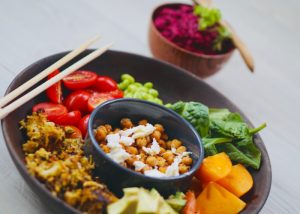
Should you want to take a stricter approach to the flexitarian diet, you may want to try the three-four-five regime. This is essentially a calorie counting diet plan that allows you to curb overeating and take control of your portions as well as calories. For breakfast, you should have a meal of 300 calories. For lunch, you should have a meal of 400 calories. And finally, for dinner, you should have a meal of 500 calories.
It doesn’t stop there. The meal plan also leaves some space for snacking, allowing a limit of 300 calories for them. Add that all together and you get a daily limit of 1500 calories. While this approach may not work for everybody, it could be worth considering for your flexitarian eating program. You may also want to try using an app to help you count calories.
What are the Benefits of Being Semi-Vegetarian
Are you thinking of going semi-vegetarian? Before you make the switch, you might want to learn a little about the overwhelming benefits of the flexitarian diet in general. Offering you the chance to eat a mainly plant-based diet with a few exceptions here and there is an attractive idea. Let’s take a moment to have a quick look at the advantages here.
1. Cutting back on meat is healthy
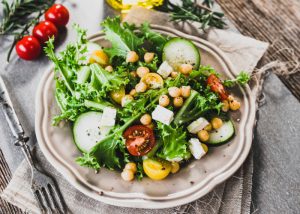
It doesn’t matter how you cut it, eating less meat is essential in your journey toward better health. Consuming animal-based products has been linked to a broad array of worrying health concerns. For example, one study found that there was an association between eating processed meats and the risk of breast cancer.[7] Other research has also linked the consumption of meat to a high chance of manic episodes and mental illness.[8]
The evidence is there and it’s plain for us all to see. The growing number of people who are moving away from animal-based meal plans shows that many are taking note of this issue. However, the thought of giving up meat entirely may be too much to handle right now. If that’s the case, taking measures to cut down how much you eat could be the answer. After all, since research suggests that meat may be harmful to your health, eating less of the stuff is certainly the correct way to go.
2. Lower risk of diabetes

More than 100 million Americans now have diabetes or prediabetes, according to the Centers for Disease Control and Prevention.[9] The condition becomes a problem when the body is not able to produce enough insulin or when the body’s immune system attacks itself.[10] In the long term, if it’s not managed properly, the issue can lead to further health problems and may get progressively worse.
Research suggests that adopting a semi-vegetarian diet could lower your overall risk of getting diabetes.[11] The reason for these changes is because the semi-vegetarian diet tends to lower people’s body mass index as well as their glucose levels. Over an extended period, that means that the chances of the person developing diabetes or even prediabetes are likely to fall at a dramatic level, which can only be a positive thing.
3. May help to support weight loss
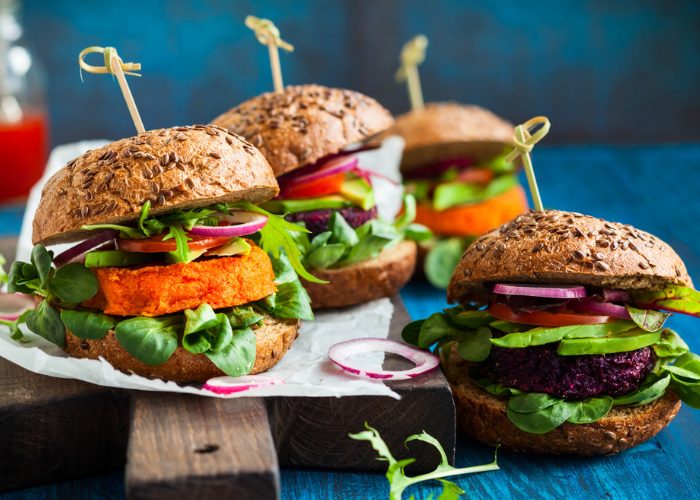
Trying to shed some excess pounds? Sticking to a strict weight loss regime can be difficult, to say the least. What’s more, as women get older, it typically becomes harder to keep in good shape. As you age, your metabolism changes rapidly, which means that gaining extra weight is a serious risk.[12] Doing something about this issue, such as changing your diet, could be one way to maintain a healthy body no matter how old you are.
One 20-year Korean study, which dealt with postmenopausal women, found that undertaking a semi-vegetarian diet could yield some intriguing results.[13] The research found that those on a flexitarian diet had a lower body mass index and body weight average than traditional meat eaters. That result suggests that simply cutting back on the amount of meat that you consume could help you to maintain a healthier weight.
4. High-quality, nutritious diet
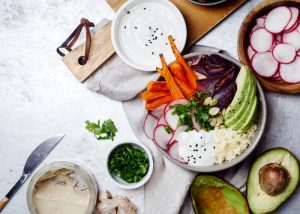
The flexitarian diet offers one great advantage over other eating plans – variety. Research has shown that both vegans and vegetarians may be susceptible to low levels of Omega 3 (or long-chain polyunsaturated fatty acids).[14] However, the same study found that those following a semi-vegetarian diet did not have the same health-related issue. The takeaway is that you may gain more from a semi-vegetarian diet plan than other regimes.
Eating a healthy balanced diet is all about choosing to consume things in moderation. While it’s true that you can get protein and the nutrients you need from a vegan diet, eating meat now and then is a simple way to get the things that you need. The truth of the matter is that it’s all about finding a nutrition plan that works for you and your health. So long as you’re getting the vitamins and nutrients your body needs, that’s what matters the most.
5. It is easy to transition

Let’s face it, going cold turkey (pun intended!) and quitting meat altogether is a difficult step for some of us. One of the biggest benefits of trying the flexitarian diet for yourself is the fact that it’s flexible and easy to manage. You don’t have to stop eating the things you love right away. Instead, you can make small, sustainable changes that will help you be healthier and happier on a daily basis. Should you want to graduate to a plant-based or vegan diet at a later date, this plan works as an ideal stepping stone.
How to Know if This Diet is Right for Me?
Now that you’ve learned a little about the flexitarian diet and what it means, it’s time to delve a little deeper here. If you’re wondering whether the diet is the right way to go for you, it could help to weigh up some of the pros and cons. Here are some of the major things of which you should be aware before you try the semi-vegetarian lifestyle for yourself.
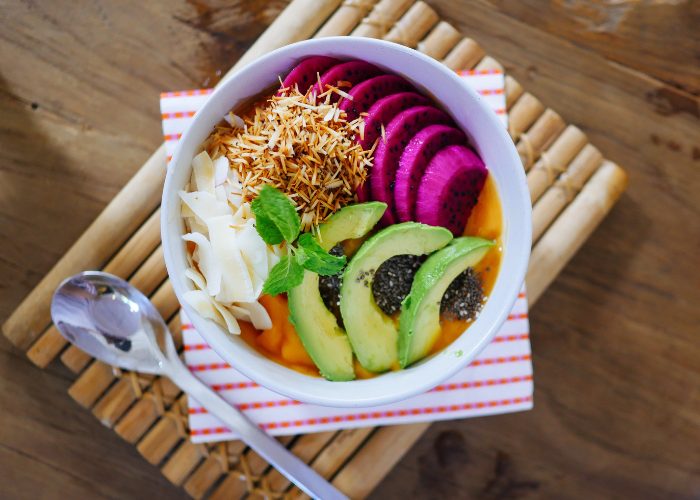
Pro: It’s a great way to boost your health
One of the major reasons that so many people are choosing to try the flexitarian diet for themselves is because it’s healthy. As we’ve already looked at, cutting back on meat is one of the best ways in which you can protect your health. If you’re looking for an easy way to start eating better, it could be worth giving this new diet a shot.
Con: It’s hard to set stable rules
Of course, when you embark on a flexitarian lifestyle, you will come up against one major stumbling block. What are the rules? Well, the truth of the matter is that this is a diet in which you make your own rules. You get to set out the terms of your eating plan.
That may sound a little daunting at first, but it doesn’t have to be. For example, you could decide to eat meat just one day a week. Alternately, you may want to start small and alternate the days in which you choose to eat meat. The choice is yours. Plus, you don’t have to berate yourself if you slip up now and then. It’s all about flexibility.
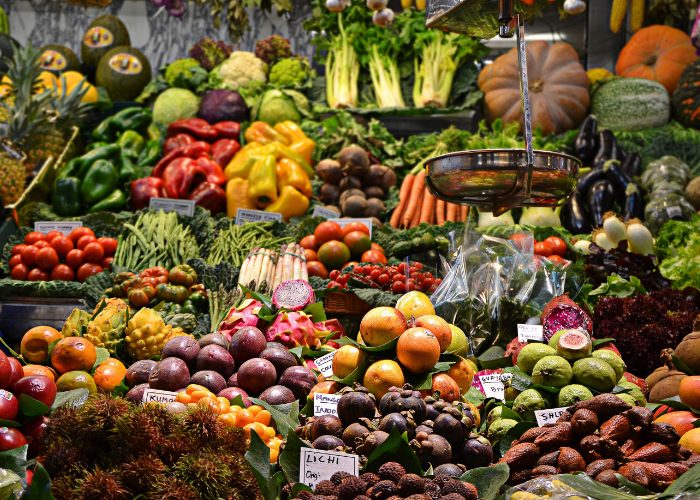
Pro: It could save you money
Make no mistakes, meat is an expensive product. The average American spends $244 annually on beef alone, according to a report from USA Today.[15] Adopting the semi-vegetarian diet means cutting back on how much meat you eat and also cutting back on how much you need to buy. In the long term, that could lead to some big savings when you hit the store.
Con: Some meats are unhealthy
Since the flexitarian diet allows you to eat meat and fish now and then, you may find that you still eat unhealthy products. For instance, both red and processed meats have been linked to long-term conditions, such as bowel cancer.[16] What’s more, some meats are high in saturated fats, which can cause your cholesterol to spike and lead to illnesses.
For these reasons, it may be worth considering the types of meat that you choose to eat. The National Health Service recommends opting for leaner cuts of your favorite meat as well as choosing white meat, such as turkey and chicken, without the skin.[17] The way in which you cook the meat also has an impact on how healthy it is. You may wish to grill your food, rather than frying it for the best results.
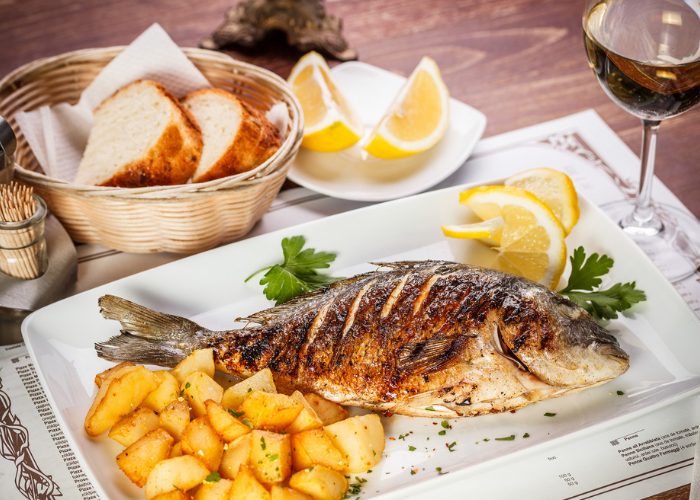
Pro: Eating out will be simple
Following a vegetarian or vegan diet comes with one major drawback –eating out can be a nightmare. Often enough, the meat-free options on mainstream menus are uninspired and bland. When you opt for the flexitarian diet instead, you don’t have to worry about this issue. On the occasions when you eat out, you can choose a fish or meat dish. That means that you don’t have to stress about getting a special menu or even worry about what may be in the dishes that you choose to order.
Con: You may need some new recipes
When it comes to cooking at home, though, it’s a whole new ball game. Much of the time, you will be cooking vegetarian or vegan recipes. If you used to be a big meat-eater, you might find the whole transitional period a little hard to handle. Getting over this obstacle is all about educating yourself. Learning some new flexitarian recipes will help you succeed.
4 Tempting Flexitarian Recipes to Learn Today
If you’re interested in becoming a fully-fledged flexitarian, adding to your culinary talents might not be such a bad idea. After all, there’s nothing better than sharpening your skill set and learning more recipes in the process. Let’s take a look at just four flexitarian recipes that will have your mouth watering in no time at all.
1. Quinoa and Chickpea Salad
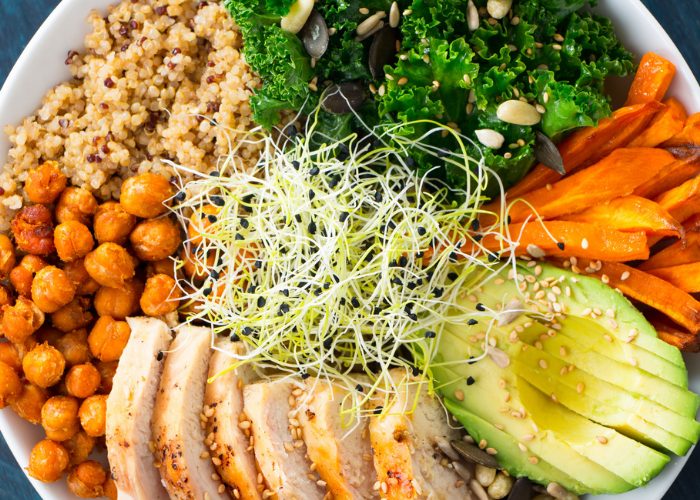
Looking for a light lunch that will satisfy all your food cravings? You might just have found it in this scruptious dish.
This quinoa and chickpea salad is packed full of nutrients and protein. That means that it’s the ideal midday meal to keep your energy levels high and you feeling perky. When you’re on the flexitarian diet, some of your meals can include meat. However, this one is completely vegan, meaning that it’s extra healthy too. Here’s how to make it.
Make Time: 20 minutes | Serves: 4 | Calories per serving: 214 kcal
Equipment: Large pan, spoon, cheese grater, two sieves, and a large bowl
Ingredients
- 50g quinoa
- 400g canned chickpeas
- 75g red cabbage
- 75g dried cranberries
- 50g oranges pieces
- 3 tbsp chopped cilantro
- 2 tbsp almond flakes
- 3 tbsp lemon juice
- Water
Directions
- Start by boiling some water in a pan. Add the quinoa to the water and leave to cook for around 10 minutes or until it is light and fluffy. Then, drain the quinoa and leave it to cool.
- Wash the cabbage and grate it into small pieces. You may also wish to finely chop the grated cabbage once you’re done to make it extra tiny.
- Drain the can of chickpeas and rinse them well.
- Wash and slice up the dried cranberries and orange pieces. You should make these as fine as possible so that the salad is not chunky.
- Put the chickpeas, quinoa, cabbage, cilantro, orange, and cranberries into a large bowl. Mix the salad around so that all of the elements are evenly dispersed.
- Serve by sprinkling the lemon juice and the almond flakes on top of the salad.
Customize your meal!
This standard flexitarian meal is super quick and easy to make. What’s more, you can use it as a base and build on it. If you’re looking for some extra protein, you could top the salad off with some dried walnuts or hazelnuts. Equally, should you feel that you fancy a little meat with this dish, as pictured above, you could add some cooked chicken breasts to the dish. Delicious.
2. Semi-Vegetarian Spiralized Zucchini and Smoked Salmon
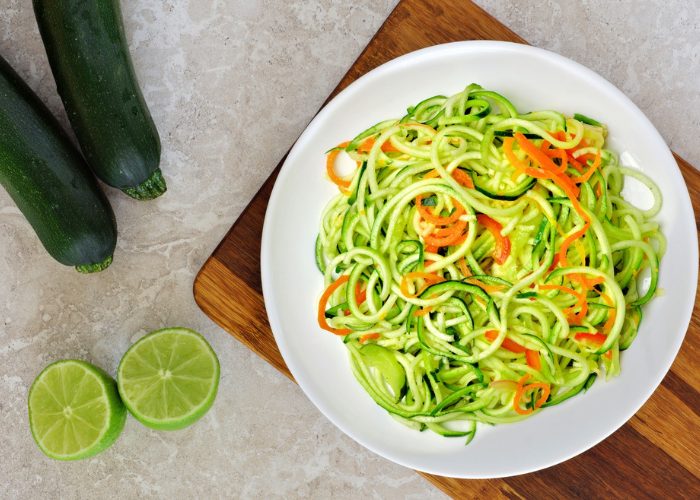
One of the best things about the flexitarian diet is the fact that you have the freedom to mix things up now and then. Say goodbye to boring diets!
While you want to keep things as healthy as possible, adding some meat or fish into recipes is a great way to keep things interesting. Of course, you might not want to go the whole hog. Instead, you could stick to white meats, like chicken, and fish. Here’s a tasty dish that incorporates salmon.
Prep Time: 5 minutes | Cook Time: 20 minutes | Serves: 1 | Calories per serving: 319 kcal
Equipment: Large pan, chopping board, knife, spoon, sieve, large skillet and large bowl
Ingredients
- 180g spiralized zucchini
- 100g smoked salmon
- 50g chopped onion
- 1/4 cup Greek yogurt
- 1 tbsp garlic powder
- 1 tbsp salt
- 1 tbsp pepper
- 1 tbsp cayenne
- Olive oil
Directions
- Make sure that the salmon is ready to serve from the pack. Take it out and slice it thinly into long strips.
- Boil some water in a large pan. Put your spiralized zucchini into the water and cook for around 7-10 minutes.
- While the zucchini is cooking, heat some olive oil in a large skillet. Put the chopped onions into the pan and cook for around three minutes or until soft. Turn the heat down.
- Drain the zucchini and leave it to rest.
- Add the Greek yogurt, garlic powder, cayenne, salt, and pepper to the skillet. Mix well until you have a thick sauce.
- Throw the zucchini into the skillet and mix. Make sure that the sauce covered the vegetables.
- Serve on a plate with the smoked salmon strips placed delicately on top of the dish.
Spiralize your vegetables!
Spiralized veg is a healthy alternative that you can use in traditional pasta dishes. While you can now buy spiralized vegetables in the store, you might want to try to make some for yourself. Doing so is a cost-effective way to eat well. Invest in a high-quality spiralizer and get to work. You can make pasta-style strips from vegetables including eggplant, zucchini, and butternut squash. Why not experiment with a range of ingredients?
3. Whole Grain Pasta with Avocado
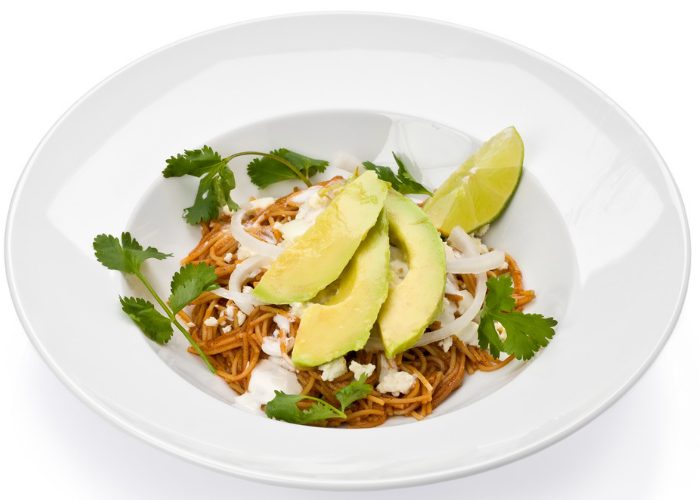
Are you craving a carbolicious evening meal? If you love pasta, it’s worth opting for a whole grain variation.
Doing so means that you get extra nutrients from the dish and makes it a little healthier. This next flexitarian recipe includes no meat! Instead, you get a huge hit of protein and potassium from the fresh, ripe avocado. Here’s how to get started.
Prep Time: 10 minutes | Cook Time: 20-25 minutes | Serves: 2 | Calories per serving: 501 kcal
Equipment: Large pan, large skillet, chopping board, and knife
Ingredients
- 100g whole grain pasta
- 50g sesame seeds
- 400g can chopped tomatoes
- 1 cup vegetable stock
- 1 large red onion
- 1 large pepper
- 50g crushed garlic
- 1 tsp cayenne
- 1 tsp paprika
- 1 tsp ground cilantro
- 1 ripe avocado
- Olive oil
Directions
- Boil some water in a large pan. Put the whole grain pasta into the water and cook for 20 minutes or until it’s soft and ready to eat.
- While the pasta is cooking, prepare your vegetables. Peel and chop the red onion. Chop and deseed the pepper. Cut the avocado in half, remove the stone, and scoop out the flesh. Chop into small chunks.
- Put a little olive oil into the large skillet. Add the chopped onion and peppers to the pan and cook for around six minutes. Then, add the garlic and cook for a further minute.
- Turn down the heat to simmer. Add the chopped tomatoes and vegetable stock to the skillet and cook for around five minutes. Add the cayenne, paprika, and cilantro to the pan.
- When the pasta is cooked, drain it. Toss it into the skillet with your sauce and ensure that the pasta is fully covered.
- Serve on plates and top each dish with the sliced avocado and a sprinkle of sesame seeds to garnish.
Customize your meal!
Fancy making this meal a little hotter? If you’ve got a penchant for spice, you’re in luck. Why not add a finely chopped green chili to the mix? When you add the crushed garlic to the pan, it’s the prime time to add the chili as well. Should you want to take the heat down a notch, you can deseed the chili before cooking. Or, you could make an original DIY spice blend. It’s completely up to you!
4. Vegetarian Bean Chili
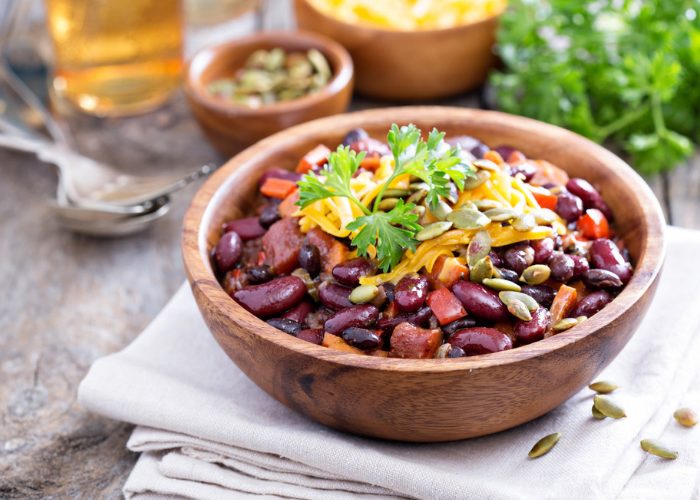
When the winter nights draw in, what you really need is a steamy bowl of something to keep you warm. There are few dishes so fitting as this vegetarian bean chili.
If you’re a chili lover, here’s a dish that you absolutely need to master. The typical vegetarian bean chili is a staple of the flexitarian diet. Boasting all the rich flavors you’d find in meat, but with no actual meat in the dish, you really can’t go wrong here.
Prep Time: 10 minutes | Cook Time: 30 minutes | Serves: 2 | Calories per serving: 234 kcal
Equipment: Large skillet, chopping board, large spoon, knife and sieve
Ingredients
- 400g can chopped tomatoes
- 50g button mushrooms
- 400g canned beans
- 1 red chili
- 1 medium onion
- 1 medium pepper
- 1 cup of vegetable broth
- 1 tbsp paprika
- 1 tbsp chili powder
- 1 tbsp garlic powder
- 1 tbsp honey
- Rapeseed oil
Directions
- Start by chopping the mushrooms, peeling and chopping the onion, and then chopping and deseeding the pepper.
- Heat some rapeseed oil in a large skillet. Add the mushrooms, onions, and peppers. Cook for around 10 minutes on a medium heat.
- Finely chop the red chili and then add it to the skillet. Cook for another minute.
- Add the canned tomatoes to the pan and continue to heat for another five minutes.
- Add the vegetable broth, chili powder, paprika, garlic powder, and honey. Stir well.
- Drain the beans and add them to the chili sauce. Stir well again.
- Cook for a further 15-20 minutes on medium and serve.
Serve your chili!
There are many ways in which you may wish to serve your homemade vegetarian chili. After you’ve made your chili, why not serve it on a bed of wild rice? You could also sneak some more vitamins into this meal by using everyone’s favorite superfood, avocado. Try topping it off with sliced avocado or homemade guacamole. Temptingly good!
Tips for Exercising on the Flexitarian Diet
If you’re on a weight loss journey, it’s not simply about eating well. You also need to make sure that you lead an active lifestyle and get moving. When you switch to the flexitarian diet, you may wonder how much exercise you can do. The truth of the matter is that working out will not only help you shed some pounds, but it will also mean that you’re fitter and healthier. Here are some tips that will help you get started:
- Engage in moderate exercise (cycling, dancing, jogging etc) for 30 minutes five days a week
- Break up your ‘recovery days’ so that they are not consecutive (especially if you have a gym injury)
- Include some strength training in your workouts
- Vary your exercise routine, focusing on different muscle groups each day
- Listen to your body and work within your limits
- Ask a trainer for extra support or advice along the way
Aside from hitting the gym regularly, take opportunities to become more active in your day-to-day life. There are many times in which you can boost your activity levels, without it being too much of an inconvenience. For instance, you may find that taking the stairs, rather than the elevator helps. Alternately, you could walk to work instead of catching the bus. Look for these small instances in which you can add more activity to your daily tasks.
If you’re not much of a gym junkie, you can try exercising at home, or doing some desk exercises at work!
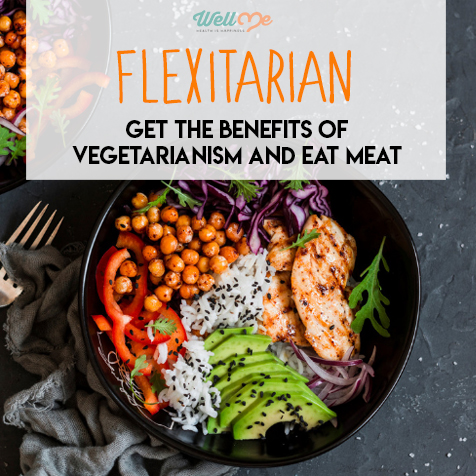
Conclusion
Ready to get started? With any luck, this article has helped to demystify the flexitarian diet. You should have a decent grasp on what the meal plan looks like, why it helps, and how you can get started for yourself. Whether you want to plunge head-first and try the three-four-five regime or would prefer to make small changes is completely up to you.
The most important thing is that you start eating better and taking care of your health. Should the traditional flexitarian diet help you to do that, all the better. Start thinking of ways in which you can improve your eating plan today and live your best life.
References
- [1] https://health.usnews.com/best-diet/best-diets-overall
- [2] https://progressivegrocer.com/flexitarian-diet-gaining-traction-among-us-consumers-poll
- [3] https://books.google.co.uk/books/about/The_Flexitarian_Diet_The_Mostly_Vegetari.html?id=Afa_dYtzhM4C&redir_esc=y
- [4] https://public.oed.com/updates/new-words-list-june-2014
- [5] https://en.oxforddictionaries.com/definition/flexitarian
- [6] https://science.sciencemag.org/content/360/6392/987
- [7] https://onlinelibrary.wiley.com/doi/abs/10.1002/ijc.31848
- [8] https://www.sciencedirect.com/science/article/pii/S0165032717315100?via%3Dihub
- [9] https://www.cdc.gov/media/releases/2017/p0718-diabetes-report.html
- [10] https://www.nhs.uk/conditions/diabetes
- [11] https://www.ncbi.nlm.nih.gov/pubmed/25192735
- [12] https://www.ncbi.nlm.nih.gov/pubmed/8361073
- [13] https://www.ncbi.nlm.nih.gov/pubmed/26251836
- [14] https://www.ncbi.nlm.nih.gov/pubmed/18305382
- [15] https://www.usatoday.com/story/money/2017/09/23/a-foolish-take-americas-favorite-meat/105755790
- [16] https://www.nhs.uk/live-well/eat-well/meat-nutrition
- [17] https://www.nhs.uk/live-well/eat-well/meat-nutrition

